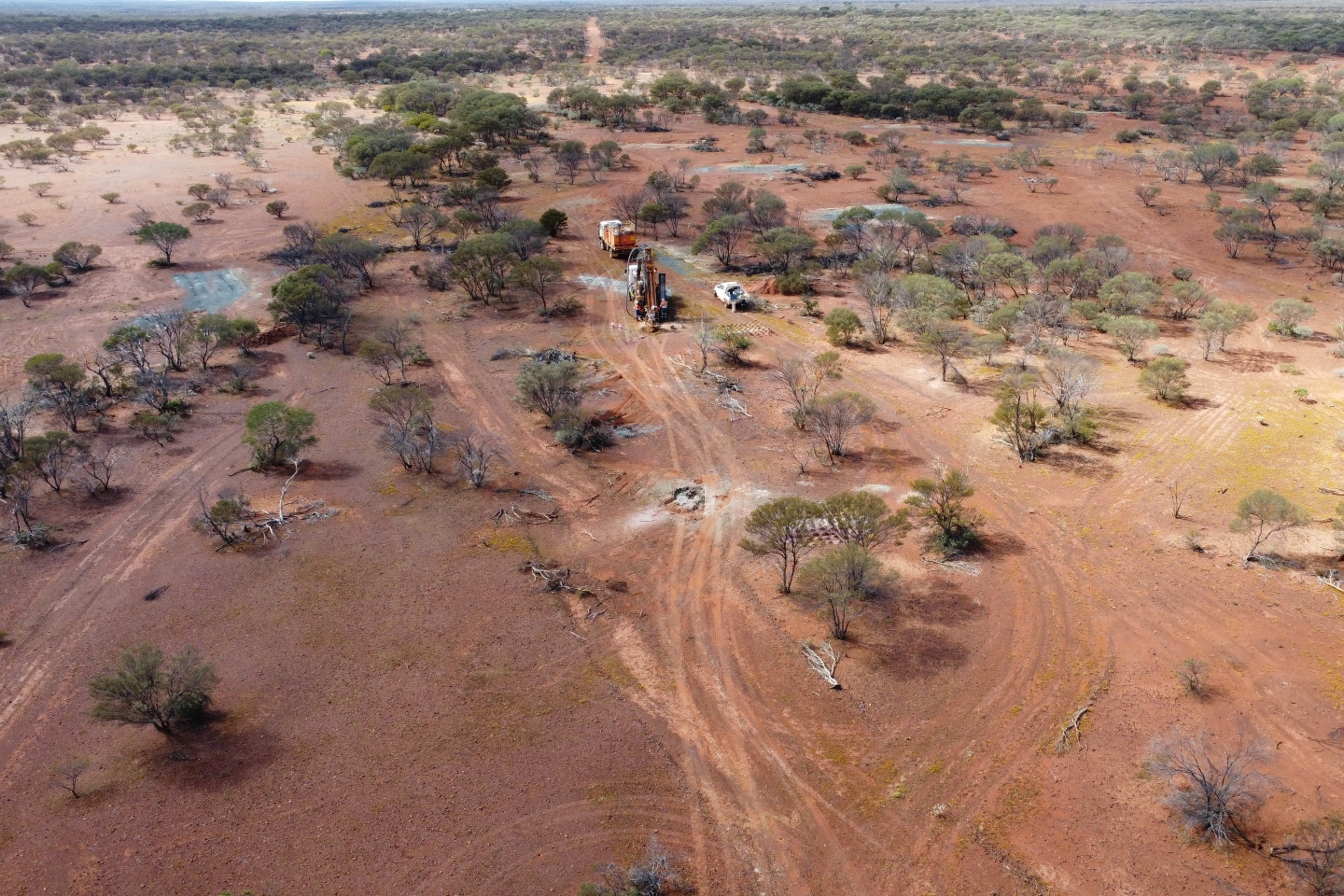
Strickland Metals has gone back to its Horse Well gold camp in the Western Australian desert and returned with another string of impressive hits including 20.3m at 1.9 grams per tonne gold from 103.6m with 7m going 4.7g/t in a diamond hole.
Reverse-circulation (RC) drilling at Palomino also threw up 21m at 1.2g/t gold from 108m including 3m going 2.8g/t. It was just 100m north of a previous RC hit of 9m at 2.4g/t from 22m. That previous hit also produced an additional 21m going 1g/t gold further down the hole from 76m, while a third RC hole gave up a solid run of 27m at 0.8g/t gold from 111m, including 2m going 2.7g/t gold.
The new diamond hole adds to the data set that management says is underpinning a growing confidence in its inferred Palomino resource area. The RC results suggest a possible north-westerly extension of Palomino or a northerly extension of Strickland’s nearby Clydesdale prospect.
All of the Palomino results show the prospect’s footprint could extend for a strike distance of up to 600m and is open at both ends and also down-plunge. The company is now awaiting results from other deeper diamond holes put in to test the north-west-plunging, open-to-depth extensions of the Palomino primary high-grade domain as the geological story at the site continues to build.
Strickland Metals chairman Anthony McClure said: “The recent and current results across the three prospects – Palomino, Warmblood and Bronco – show that Horse Well is continuing to shape up as a significant gold project. We are constantly identifying new gold mineralisation, locating extensions to known mineralisation and generating new promising targets across a large prospect area.”
McClure also said an additional diamond rig would soon be added to the Yandal project to help management sort out the Horse Well stratigraphy, test the company’s large-scale Great Western target and also fast-track several other key exploration priorities.
In an RC hole at the Warmblood prospect, about 1km south of Palomino, Strickland has identified a third zone of mineralisation not previously recorded, comprising a 6m run at 4g/t gold from 37m and 7m going 1.1g/t gold from 62m depth. The discovery arose from drilling designed to test extensions in both oxide and primary domains and to follow up last year’s air-core (AC) results from Warmblood that included 36m at 1.2g/t gold from 24m, including 16m running 2.5g/t from 32m.
Management says it is planning additional drilling to follow up the specific structure and to accurately define the multiple primary lode environment at the prospect. Warmblood appears to embrace a full 1km of strike along a primary branch structure off the major Celia Shear, where multiple elements and sub-elements are understood to control the majority of mineralisation in the Horse Well gold camp. The deposit appears to be terminated at its northern extremity by a north-east-trending tensional fault and may also be constrained at its southern end by a similar structure.
About 1.7km north-west of Warmblood – and seemingly on a related north/north-west structure – the Bronco prospect has been tested by diamond drilling and other work designed to figure out the controls on the primary mineralisation.
The mineralisation lies beneath a shallow coherent oxide gold blanket measuring about 350m by 200m. It has grades running in excess of 1g/t gold and is spread across two slightly diverging primary gold-mineralised structures at depth, between 1km and 2km apart.
The northernmost structure trends into the main Konik mineralised area towards an induced-polarisation (IP) anomaly between 100m and 200m north of the currently-defined primary zones.
Strickland is planning more drilling designed to better define the high-grade lodes near surface and the oxide zone and also to test the area around the IP anomaly, with later deeper diamond drilling to assess down-plunge high-grade extensions.
The company’s intensive drilling at Horse Well is gradually stitching together an intriguing and complex network of interlinked structures that comprise a big plumbing system currently extending through an area measuring about 4.25km north-south by 2.25km east-west.
At this stage, management has no indication that its target potential is diminishing and if anything, the growing structural insights can only assist in its modelling of new potential target areas.
Is your ASX-listed company doing something interesting? Contact: matt.birney@businessnews.com.au
















